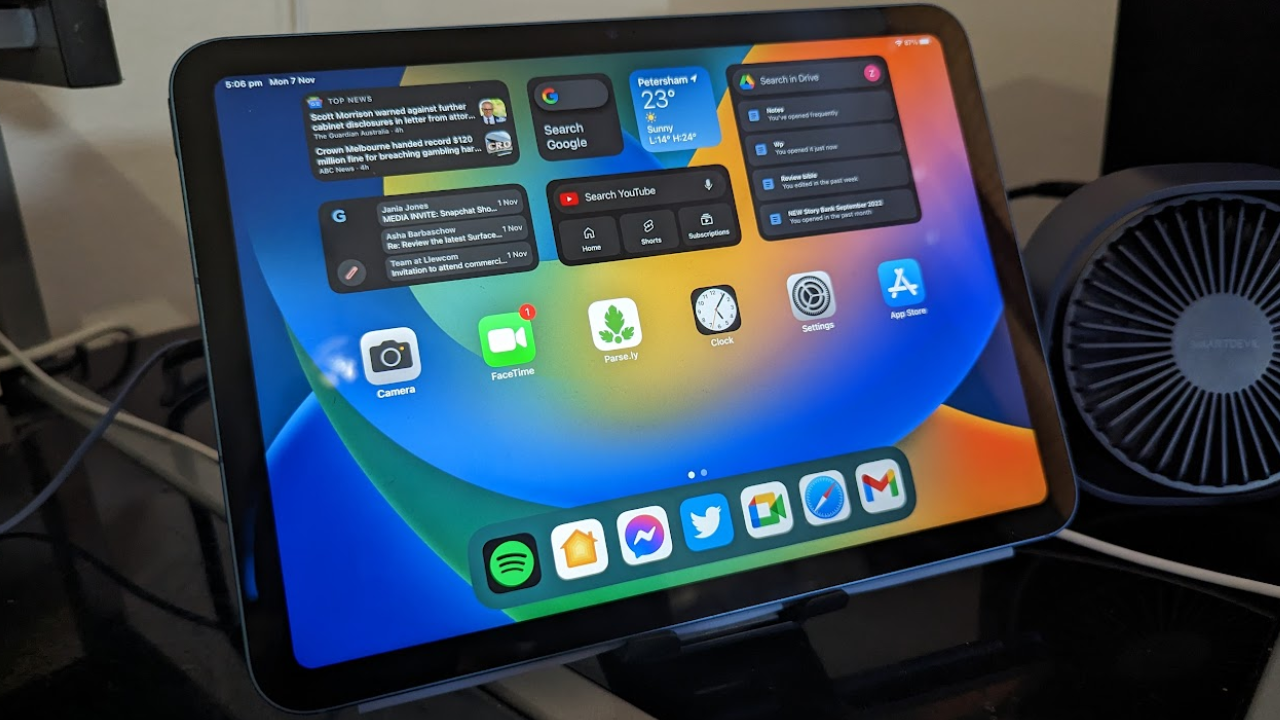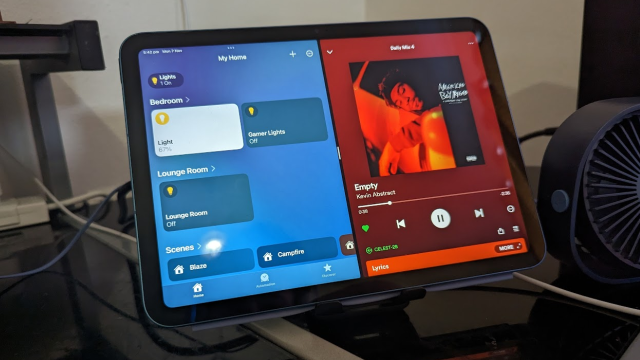For a long time, I’ve been aiming for smart-home perfection (within the constraints of being a renter). I have Nanoleaf tiles, smart bulbs, Google Assistant speakers and an Android TV, but the piece that brings it all together is… the 10th-generation iPad.
Yes, I’ve turned a tablet into a glorified light switch. At $750, although it’s not massively expensive compared to some other tablets, the 10th gen iPad makes a terrific smart home screen.
It mostly just sits there, beside my desk, for controlling lights, checking the weather, answering voice commands and receiving video calls. But it has the added benefit of portability and the entire app store, including social media apps, games and so many other things that aren’t available on smart home screens.
Smart home screens in particular were something that I considered a novelty for a long time… until I saw it done right.
Tablets make the best smart home screens
Let’s go through the competition: the $349 Google Nest Hub Max, or the $399 Echo Show 15, for example.
At under $400, these screens offer the basics of a smart home. Calendars, time, weather, temperature, all the stuff that you could stuff into a tablet home screen with widgets.
These are all useful things, of course, and having them connected in your smart home is nice, as they added visuals to your smart home, but these devices are masters of none. They’re not terribly fast, they’re limited in their portability (as they’re rarely battery reliant), and they’re deadlocked to the small suite of apps available on their platforms (usually streaming apps like Netflix and Disney+).
Meanwhile, over at Apple, the closest thing to the smart home screen is the iPad, which you could buy on Amazon for $449, or from Apple for $549.

It’s more expensive, absolutely, but for the added benefits, it’s well worth it (though you should also factor in the cost of a stand). Not only is this the go-to choice for users who prefer Apple’s iOS (or in the case of the iPad, iPad OS), but its features are functionally much, much deeper than either smart screen mentioned earlier.
I can do literally everything I can do on a smart screen on an iPad with much greater freedom, with full access to the Apple App Store (provided the apps are iPad compatible). Apple’s Homekit app also has deep functionality for your lights and connected systems.
And it’s no surprise that the benefits of using a tablet as a smart home display have occurred to Google. The Pixel Tablet, expected to ship next year, has been shown to have an attachment that lets it become a smart home screen.
But let’s pull it back. Where do these devices come face to face? With voice assistant.

Siri vs Google
In my testing between Siri on the iPhone 13 Mini and the 10th Gen iPad against Google Assistant on the Nest and Google Pixel 7 Pro, Siri was often faster, however, Google Assistant is still good at following instructions.
Much of this is because Siri processes prompts locally on the iPhone and iPad, resulting in naturally faster speeds, whereas Google has support for this if you have a Google Nest on your home internet. Having this also makes it so you don’t have to unlock your phone to turn the lights on and off.
Google deserves some leeway here. Google Assistant often produces much deeper responses than Siri, especially when asking for information from the internet.
For this reason, I’m excited for the Pixel tablet, and I think my smart home screen problem could be solved by most tablets. So, this begs the question…
Which tablet makes the best smart home screen?
Depending on how much use you’d get out of your tablet, your price point varies.
To me, the 9th generation iPad makes the most sense at $549, a fairly nice price point for a powerful tablet that is still supported and sold by Apple. If you want this year’s model, the 10th gen (what I use), that’ll set you back $749.
And, of course, there are cheaper iPads than these. At the moment, the 5th gen through to the 10th gen of the standard iPad are supported by iOS 16, along with the iPad Mini 5th gen and 6th gen. You could pick these devices up secondhand and they’ve be perfectly capable of what I’m describing.
Additionally, there are Android tablets worth trying out, including the Oppo Pad Air ($379) and the Samsung Galaxy Tab S6 Lite ($549). For the most part, it all comes back to what you’re trying to achieve with your smart home and your budget.
But I hope I’ve convinced you to maybe not consider a smart home screen and just get a tablet instead.
